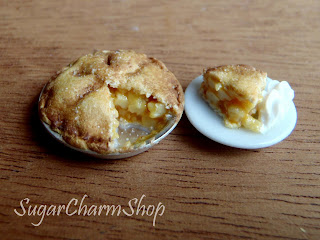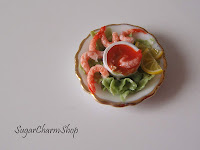Today is the deadline of my giveaway - any entries entered today will be accepted. The winner will be announced the 25th of January.
If you read my post about out mailbox you may understand, that I have had problems receiving my mail - which also means that I currently do not have the giveaway price. If it doesn't get here before the announcement, please have some understanding. But whoever wins, WILL get their price, and I'll ship it as soon as I receive it.
Review; Efcolor stove set/ "oven"
Some time ago I showed you this picture.
I ordered the Efcolor stove set from metalclay.co.uk And now that I've tested it out some more, I'll give you my review and opinion about it.
Why did I order it?
well, you can use a regular oven to melt the efcolor enamel, and it works perfectly! but I wanted to try out this set for a few reasons;
I bought the enamel powder mainly to use when making miniature dollhouse plates, pottery etc. and heating up a regular oven just to make maybe 4 plates is rather stupid. I also thought it would be more convenient - it's small and portable, meaning that you can bring it everywhere. It's powered by 3 tea-lights, so the heat is practically free! yeah, you have to buy some candles (the set comes with 3 candles) and you'll need matches or a lighter... but those are both very cheap. The fact that it's powered by 3 tea lights is amazing, you can literally do the enameling anywhere you want.
-->
In the set:
I looked up the enamel stove set on both a danish website and the metalclay site. The stove set you'd get from the danish site had the stove itself - not sure if it had the tea lights in it. The set from metalclay offered a set including all the pieces you see in the picture - and even though I live in Denmark, I ended up paying less than I would have on the danish site! amazing! :)
What you get:
-Stove
-3 stands to hold pieces. These are great if you're going to enamel both sides of a piece.
-"Tweezers" a very wide nosed pair of tweezers, I actually find it great for picking up my plates.
-Spatular, a small spatular to help remove items from the hot stove.
-A large round spatular/plate with handle; making it easier to insert and remove things from the stove.
They also included 2 small leaflets about the Efcolor products.

Baking polymer clay, and baking polymer clay with enamel powder:
On the box, I believe it said that this small stove has a surface temperature of approx. 160-180 celcius. In celcius the normal baking temperature for polymer clay is approx. 110-130. So this stove is quite a bit warmer.
For the first test I placed a prebaked polymer clay plate (had been baked for 5 minutes in a regular oven) on one of the spatulars and placed it in the Efcolor oven.. I don't recommend this - it didn't take long before the clay bubbled up a bit and got burnt. I then placed a plate on top of one of the small rectangular stands - this worked well. I did the same with a plate, this time adding enamel powder to it, and the result was a beautiful plate, just as if it had been in the normal kitchen oven.
The stove set is pretty hard on the clay due to the temperature (just like a toaster oven). The clay can therefore easily be discolored (eg. white clay turning off white).
One thing I noticed, is what you see in the picture above.. I baked a "cane" (left), cut off a slice (right). I was able to bend the slice as much as I wanted. the high heat apparently made the clay really strong.
I am not going to use this oven to bake my miniature food, because I don't want it to be discolored, but I will continue experimenting with both this stove set and my regular kitchen oven, trying to overbake and bake at higher heat settings. and I will let you know the results when I've tried it out.
Do I like the Efcolor stove set?
yes! - it gives you "free heat".. It heats up in just a couple of minutes..
I think it's great for making pieces with enamel on top, and it would work perfectly for baking stuff like sprinkles and other tiny decorations for your polymer clay creations. You can even use it for baking a master that you need to make a mold from.
I guess you can even adjust the heat by removing one of the candles.. but I wish there was some kind of indicator. I am extremely happy that I bought it, and will be using it a lot :)

























